Sarah would tell you the highlight of our trip to Indonesia was seeing orangutans in Borneo. We got engaged in Indonesia, but still—orangutans in Borneo.
In Indonesia, we visited Borobudur, Mount Bromo, and Komodo Island. None compare to mythical Borneo. More specifically, Tanjung Puting National Park—possibly the coolest place in the world to see orangutans.
Visitors access the park via two-story live-aboard boats called klotoks. While it requires some planning, the pay-off is a life-affirming experience. This guide will tell you what you need to know about planning a trip to Tanjung Puting and what to expect once you arrive!

Search the Guide
About Tanjung Puting National Park → When to visit → Book your klotok early → How do I get there? → How many days and how much? → Cruising the black water → Tell us about the animals! → Sleeping on the klotok → Eating on the klotok → The klotok crew → The klotok crew ladder → Tipping the crew → Keeping the bugs off → What to wear
About Tanjung Puting National Park
Tanjung Puting is 1600 square miles of swampy forest on Borneo’s southern coast. Wildlife viewing focuses around Camp Leakey and three small research stations along the Sekonyer River. Birutė Galdikas, one of the famous “Leakey’s Angels,” founded Camp Leakey in 1971 as a research and rehabilitation center for orangutans.
When to visit
In Tanjung Puting, June through September is the dry season, making it the optimal time to visit for two reasons: 1) nobody wants to be rained on (duh); and 2) the orangutans and other wildlife are more likely to visit the park’s feeding stations when food is scarcer during the dry season.
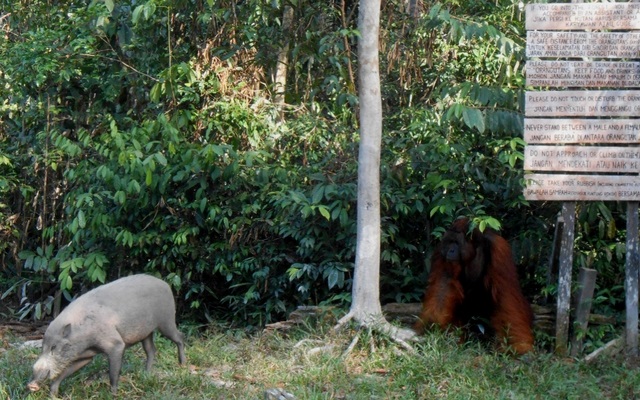
Book your klotok early
Everybody wants to visit in the dry season, so klotoks get booked up. Kumai, the launch point for Tanjung Puting, is a small fishing village and there are only so many boats available. We started inquiring a month in advance for dates in August and most operators were already completely full. After contacting five or six operators, we found one boat available leaving on a workable date. Local Guides provides online booking, but mostly you need to inquire about availability via email or telephone.
How do I get there?
Almost everyone flies in and out of Pangkalan Bun. Flights are limited, but we flew in from Semarang on Trigana Air and flew out to Surabaya on Kalstar. If you fly in during the morning, your operator will pick you up and take you straight to the departure point in Kumai. On the final day, our guide dropped us off at a hotel in Pangkalan Bun and scheduled an airport taxi for us in the morning.
How many days and how much?
We spent three days and two nights on the boat. That felt perfect for the amount of distance you need to cover without feeling rushed. If you are interested in hiking, you could stay longer. For two of us, it cost Rp 6,000,000 (about $445 in 2015). Tips added another Rp 1,500,000 (see tipping advice below). We paid a 30 percent deposit via PayPal and the rest in cash on arrival. (Update: Reader feedback suggests the average price is a bit higher. The two other quotes we received were for $772 and $810, so it pays to look around.) Local Guides publishes rates online.
Cruising the black water
As you travel up the Sekonyer River, the brackish water gives way to inky glass. Tannins from jungle leaves fall to the floor and dye the water jet black, reflecting the trees above.
Tell us about the animals!
Obviously you come to Tanjung Puting for the orangutans. Seeing the “man of the forest” travel through the trees is Gorillas-in-the-Mist amazing. There are also macaques, wild boar, crocodiles, and tons of proboscis monkeys (also called Dutch monkeys—an Indonesian reference to their former colonizers). The jungle features many animals that are a little harder to spot, but fun to look for. The gibbon (pictured below stealing bananas) is a stone-cold badass.
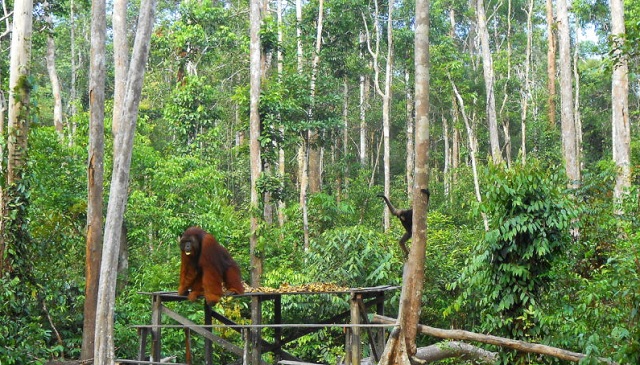
Whether on the boat, sitting at a feeding station, or walking the trail, there are tons of animals to see. Your guide will point you in the right direction.
Sleeping on the klotok
Klotoks come in various sizes. Larger ones have guest cabins. Ours was one of the smaller ones, with mattresses set up on the top deck under an awning. Each night, the crew set up our beds, complete with mosquito nets. We saw one cockroach, but we were surprised how few bugs there were on the whole trip. The Permethrin probably helped. Our Malaria pills were likely unnecessary.
Eating on the klotok
The price of the booking includes meals and drinks. We ate banana pancakes, fresh fish, and mie goreng (fried noodles), among other Indonesian dishes. Tea and coffee were always available. This was especially nice to sip while cruising down the river in the afternoon.
The klotok crew
Our crew consisted of a guide, ship captain, captain’s assistant, and cook. Our guide, Mr. Dodi, went above and beyond to answer our million questions and make us comfortable. The rest of the crew always seemed to know when we were hungry or thirsty, and delivered us to the various camps with as much stopping to view wildlife as we desired. Our tour operator, Ali Mashuri, was pleasant when we met briefly in Kumai and responsive to our emails. His website is here: https://www.orangutantourstanjungputing.com/. We highly recommend them.
The klotok crew ladder
Mr. Dodi explained to us the progression of crew members. Typically, the cook is an entry level position. Then you progress to boat captain assistant, then boat captain, and finally to guide. The speed you move up depends partially on how quickly you can learn other languages. Our guide, having never left Borneo, spoke English, French, and Spanish in addition to his local language and Indonesian. He was working on German and Italian. He learned all of this while working on a klotok listening to guides and foreigners.
Tipping the crew
Given the time commitment from the guide and crew, you will want to tip at the end. Researching etiquette gives varied results. One tour operator says “Tipping your guide and your team is necessary and is an important part of their job satisfaction and financial reward. It is customary to tip them around 15 – 20 % of your journey price, depending on your satisfaction of their services. Our best suggestion on this is for you to share the amount according to the level of their duties.” Another tour operator says tipping is “not compulsory, or expected, so it’s completely up to you.” The operator gives examples of Rp 50-150k for the cook and boat captain and 150-500k for the guide. Our opinion: Your tips will mean a lot to the crew and create an incentive to preserve Tanjung Puting, so err on the side of generosity. We decided on 10 percent for the guide and 5 percent for each crew member.
Keeping the bugs off
Before traveling to Indonesia, we sprayed our clothes with Permethrin and it worked amazingly well. For Sarah, who is insanely attracted to bug bites, we were especially worried about malaria. Whether it was the Permethrin or a general lack of bugs in the dry season, we barely noticed any bugs on the whole trip. We purchased this particular Permethrin bottle from Amazon which was enough for each of us to saturate a couple sets of clothes we designated for buggy areas.
What to wear
The climate is warm/hot and can get humid when walking in the jungle. Bring a hat and sunscreen to avoid a sun burn. The nights get a little cooler, but we were more than comfortable with light hiking pants and long sleeve shirts. Sarah wore yoga gloves soaked in Permethrin.
Anything else you want to know about seeing orangutans in Tanjung Puting? Let us know in the comments.
Like this post? Pin it for later!
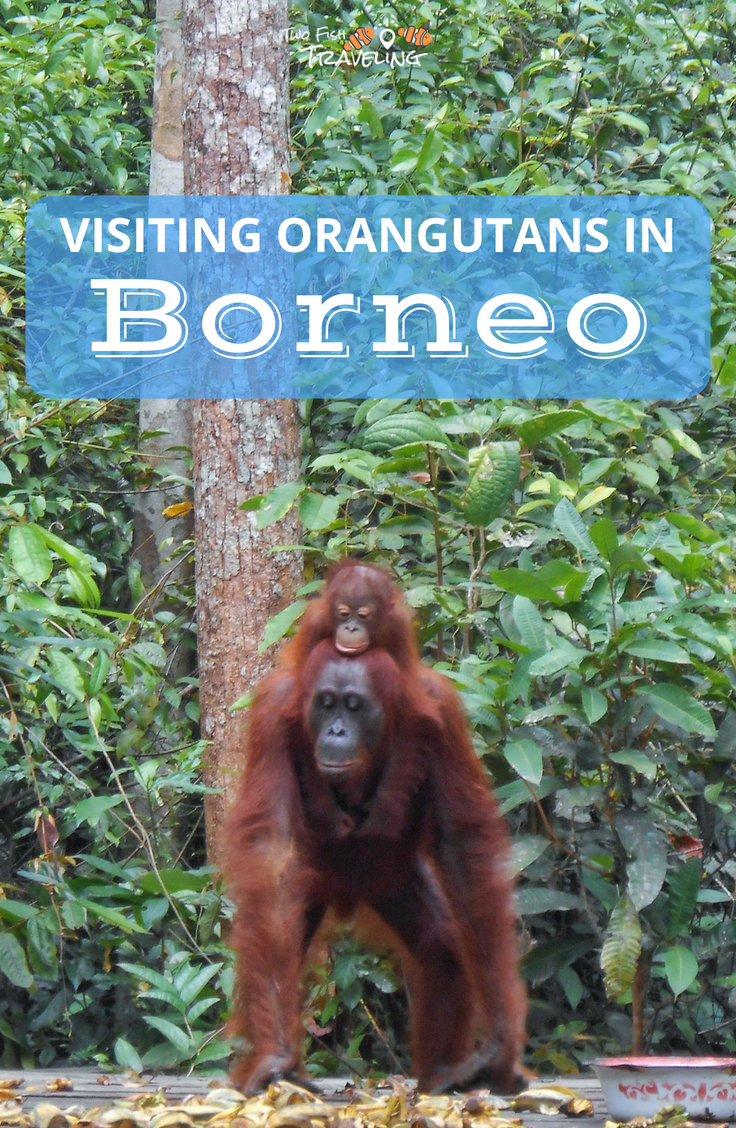
Note that this guide contains affiliate links, meaning that if you purchase something through the links, you are supporting us in the costs of running Two Fish Traveling. All the products that we discuss are ones that we use and love—like bug proofing our clothes with Permethrin. We earn a small percentage of the sale at no extra cost to the purchaser. We will never link to products that we do not wholeheartedly recommend to our readers and have found useful ourselves.
The following two tabs change content below.


I am Sterling, one of the Two Fish Traveling. I love to travel and live in Polson, Montana with my wife Sarah.
Latest posts by Sterling Laudon (see all)
- How to Hike the Top of the Chinese Wall in the Bob Marshall Wilderness - March 28, 2023
- All of the bad things that happen when you travel - October 14, 2019
- Favorite countries of long-term travelers - August 8, 2019




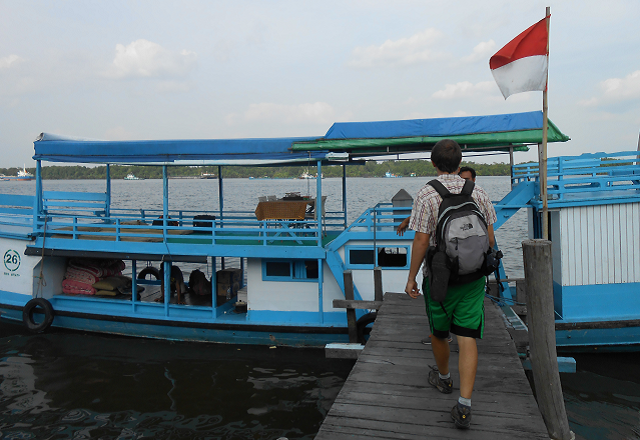
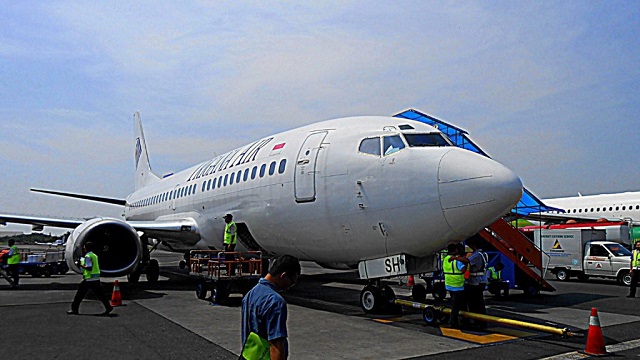
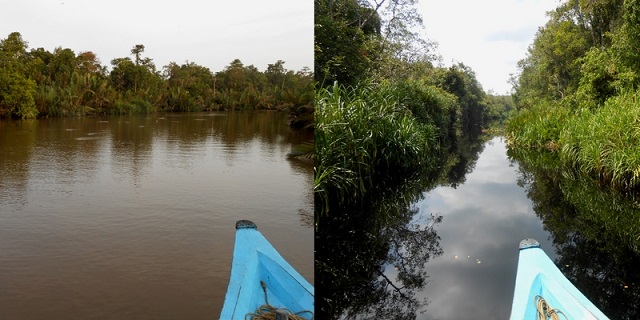
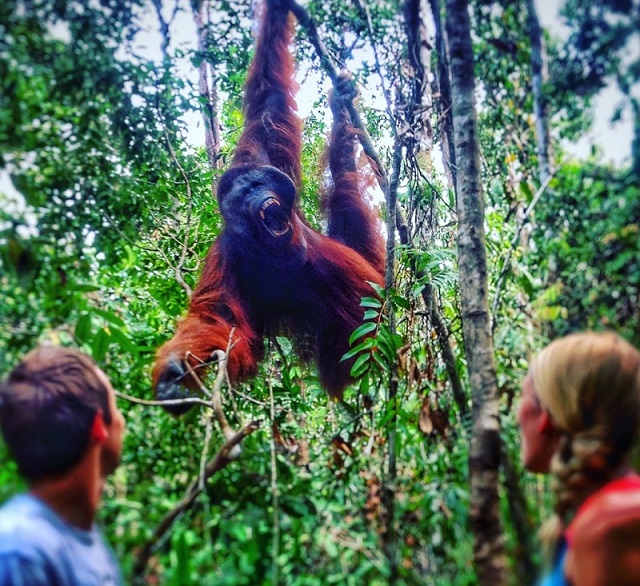
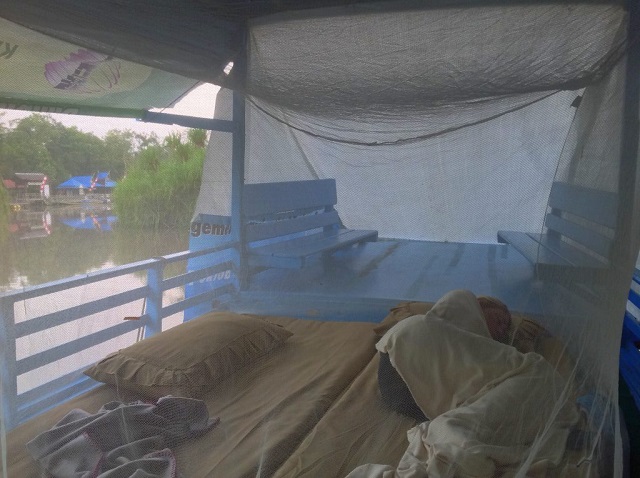
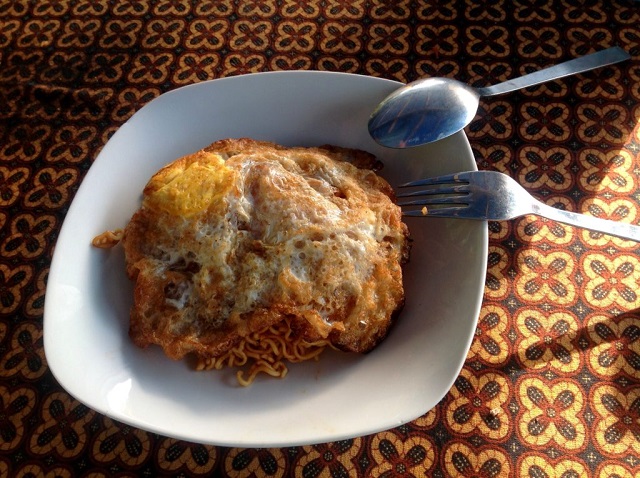
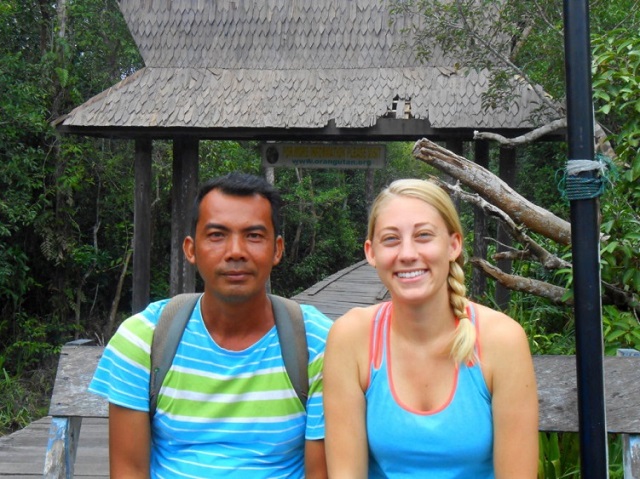
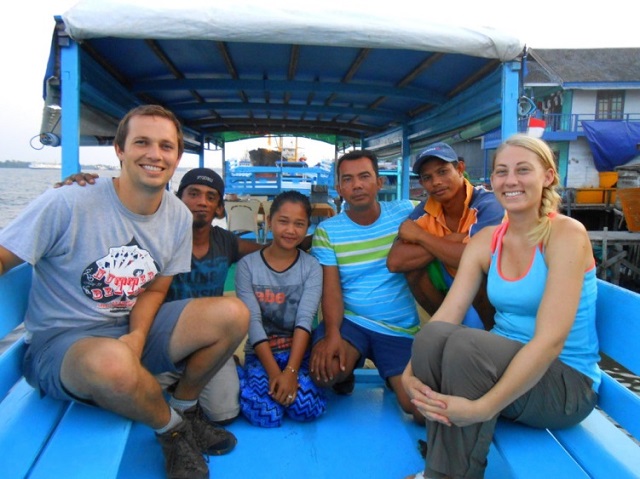


Hi Sterlin, Thank you for all the valuable tips. I am not preparing my own trip to Tanjung Puting. I asked for a quote with Ali Mashuri, and it appeared to be quite expensive compared to other quotes I got from Siti or local-guides. For example, local-guides (http://www.local-guides.org) appears to offer the same 3D2N tour for 30% less! The packages all appear to be the same from a first glance, or does Mashuri to your knowledge offer anything more than the other tour operators to justify the higher prices? Thanks a lot! I found all the other advices in your… Read more »
Hi Ferdinand, So happy you found it useful! My guess regarding prices is that, like many things in southeast Asia, the price is negotiable and changes based on demand (unlike tours at home with standard rates). Possibly Mr. Mashuri had a boat open for a narrow window of dates and he gave us a lower price to fill it. We contacted several operators and Mr. Mashuri’s was the least expensive offer. We never tried to counter-offer, but it might be possible. As far as I know, tours offering the same itinerary are all pretty similar. Getting a good guide really… Read more »
Thanks, Sterling! I forgot to mention that the prices from Mashuri that I used in my comparison were after bargaining, but I may be a terrible negotiator hah. For a terrific guide it is surely worth it to pay more, but I have to say that I have had so far in my correspondence a terrific experience with local-guides: they are very helpful in their replies, and I like it that they are transparent about their – relatively low – rates on their website (with all the other’s i had to e-mail them first and then i receive quotes that… Read more »
Even Borneo is modernizing a little. I remember needing to email everyone a couple years ago. Enjoy your trip!